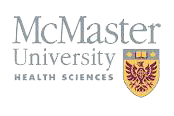An Evidence-Based Approach, McMaster University
Program Chair: Dr. K. Trinh, MD, PhD, FCFP, FRSS
Diploma in Sports Medicine
Chair, M.D. Program Admissions (2011-6)
Chair, Multiple Mini Interviews (2003-2013)
Acupuncture is a system of diagnosis and treatment. The diagnosis is based on determining the neuro-musculoskeletal structures involved or a comprehensive Chinese theory of energy balance. The treatment involves insertion of small solid needles into precise anatomical sites in the body to produce therapeutic effects.
Benefits of Acupuncture for Patients
On November 3-5, 1997, an independent panel of experts at the U.S. National Institute of Health (NIH) Consensus Development Conference stated that “Promising results have emerged showing efficacy of acupuncture in adult postoperative and chemotherapy nausea and vomiting and in postoperative dental pain.”
“There are other situations, such as addiction, stroke rehabilitation, headache, menstrual cramps, tennis elbow, fibromyalgia, myofascial pain, osteoarthritis, low back pain, carpal tunnel syndrome, and asthma, in which acupuncture may be useful as an adjunct treatment or an acceptable alternative or be included in a comprehensive management program.”
The conclusion of the NIH Consensus Statement was, “There is sufficient evidence of acupuncture’s value to expand its use into conventional medicine and to encourage further studies of its physiology and clinical value.”
More recently, the British Medical Association (BMA) concluded that acupuncture should be more widely available in the healthcare system, and family physicians should be trained in some of its techniques. This does not follow without reason. After a two year study, the BMA found acupuncture to be efficacious in treating back and dental pain, nausea and vomiting. Since acupuncture is the most sought after complementary therapy in Britain, widening its availability in the healthcare system would complement this increasing trend (Silvert, 2000).
Similar to the NIH consensus statement, the BMA study found a relatively low incidence in complications associated with acupuncture. For instance, many physical injuries (e.g. pneumothorax) and infections can be avoided when treatment is carried out by a well-trained acupuncturist. This includes proper sterilization techniques as well as knowledge in anatomy and physiology with particular emphasis on the location and depth of major organs (Silvert, 2000).
Overall, the BMA approves acupuncture as a viable treatment for various conditions. It has “complete[ly] change[d] the way that the medical establishment views complementary therapies” (Silvert, 2000).
More and more third party Insurance companies and Worker Safety Insurance boards are recognizing the effectiveness of acupuncture, enabling patient treatments to be billable under most health and wellness plans.
If you are looking for Dr. Elorriaga’s Contemporary Acupuncture Program, click here to go to his webpage.
Colleges of Physicians & Surgeons, Chiropractors, Physiotherapists and Massage Therapists of Ontario
The McMaster University Medical Acupuncture Program either fulfils the training requirements or is recognized by these colleges for acupuncture training. See Accreditation for further details.
Workplace Safety and Insurance Board (WSIB) Acupuncture Billings
McMaster Medical Acupuncture Program Receives Approval for Acupuncture Billings "Medical Acupuncture Program - An Evidence-based Approach to Traditional Chinese Medicine" is recognized by the Workplace Safety and Insurance Board (WSIB) of Ontario for payments to...


